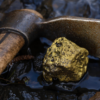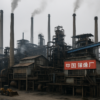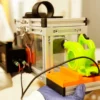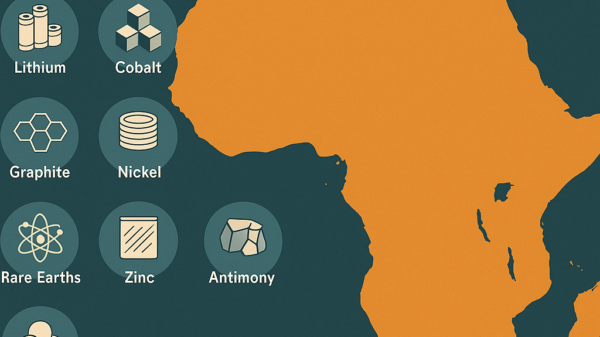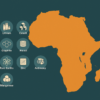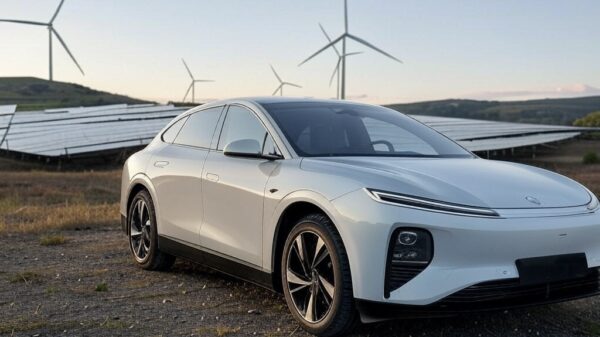Instead of pristine jungles or the ocean, mining companies could source rare precious metals from asteroids in the next 40 years.
Rising costs, pollution, and ecosystem disruption have prompted a closer look at asteroids as a promising source of precious metals for modern technology, including batteries, solar panels and windmill parts. The increasing demand for clean energy drives the need for these critical minerals, while concerns persist about the environmental impact of terrestrial mining.
Space mining, though costly, offers a solution.
This month, two different groups of economists published economic assessments of mining asteroids in the journal Proceedings of the National Academy of Sciences.
One of the assessments was done by economists from the University of Tor Rome Vergata, the University of Maryland and Middlebury College. It focused on challenges that would have to be overcome to capitalize on asteroid assets that are currently up for grabs.
The assessment identifies research and development spending and policies governing space usage as the primary obstacles hindering the use of space activities to drive economic growth. Private companies tend to direct their space research initiatives toward profitability rather than the broader dissemination of knowledge.
Moreover, the constraints outlined in the Outer Space Treaty further complicate matters.
This international treaty prohibits companies from claiming ownership of specific orbital spaces around Earth. As a result, issues such as space wastage and the proliferation of space debris, which could potentially collide with one another, are becoming increasingly prevalent.
“Solving these global risks poses global collective action problems, and their solution will require international coordination,” reads the first assessment.
Other problems mentioned were the underprovision of planetary protection against asteroids and the backward contamination of Earth.
“If managed well, the exploration and utilization of space could present unprecedented opportunities for economic development and sustainability.”
Read more: Rogers partners with Space X, Lynk Global to bring satellite-to-phone coverage nationwide
As earth-bound production becomes constrained, space becomes a more attractive option
The second assessment was conducted by three members from the Colorado School of Mines, and a fourth member was from the International Monetary Fund. It focuses on how mining in space could potentially contribute to sustainable growth on Earth.
The assessment found that a transition from mining on Earth to space could facilitate continued growth in metal usage on Earth while mitigating environmental and social costs.
Researchers considered costs for everything involved, starting with research and development and moving on to the design and construction of rockets and the equipment, including robots, needed to extract metal from asteroids and bring it back to Earth.

Average abundance of minerals in metallic asteroids and on Earth. Table via “Mining in space could spur sustainable growth”
Their calculations indicate that in the next 30 to 40 years, mining metals from asteroids could become not only profitable but also the primary way to obtain precious metals as their prices rise and the cost of working in space goes down.
“As Earth-bound production becomes more constrained, space becomes a more attractive option. R&D efforts are expended for Space mining knowledge stocks, which augment the space production scalar,” reads the second assessment.
“Over time, the binding policies on environmental damages combined with improved efficiency of production in space results in a transition to space mining.”
Asteroids have a potpourri of metals and materials
A study published last year in the journal Planetary and Space Science reported that asteroid composition varies widely, ranging from volatile-rich bodies to metallic bodies with high concentrations of rare metals like gold, silver, and platinum, in addition to more common elements such as iron and nickel
Certain platinum-rich asteroids may contain grades of up to 100 grams per ton, which is 10-20 times higher than those in open-pit platinum mines in South Africa.
Astronomers and scientists are interested in different kinds of materials in space, like gases (such as hydrogen, carbon, and oxygen), certain types of rocks that can be processed to make metals, and metals that are already in a usable form. Most of these materials aren’t worth bringing back to Earth because it’s too expensive, and we might not ever do it.
However, some special metals known as platinum group metals (PGMs), such as rhodium, ruthenium, palladium, osmium, iridium, and platinum, have garnered significant attention in the context of space mining. These metals might exist in sufficiently high quantities in certain asteroids, making it worthwhile to extract them from space.
Read more: LandSpace and GCL launch methane-powered rocket into orbit from China
Read more: Canadian nuclear agency partners with space agency to bring high-tech shielding for astronauts

Oliver Daemen, Mark Bezos and Jeff Bezos listen to their New Shepard crewmate, Wally Funk, describe their suborbital space trip via Blue Origin. Photo by Alan Boyle via GeekWire.
Space access is becoming cheaper
Almost all modern technologies are connected to space in one way or another. Technology and policy shifts such as reusable rockets, greater computing power and new contracting mechanisms led to lower launch prices and increased commercial interest in space.
Despite the Outer Space Treaty of 1967 placing challenges on economic development in space, private companies such as Blue Origin and Space are making space access cheaper. Both companies have reduced the cost of rocket launches by a factor of 20 over the last decade.
“What if these costs continue to decline, making mining from asteroids or the moon feasible? What would be the implications for economic growth and the environment?” reads an assessment.
As the commercial interests in space increase, so does the number of payloads. These payloads extend beyond a handful of high-income economies, like the United States and China. In fact, the number of countries with payloads in space has reached an unprecedented high.

Graph via “Space exploration and economic growth: New issues and horizons”
Type C asteroids are popular because of their water content
A recent report by Fact.MR has shown that the rapid expansion of the commercial space sector is poised to drive space mining operations in the years ahead. Currently, the global space mining market is valued at USD$1.7 billion, and it is expected to experience a compound annual growth rate of 16.1 percent over the next ten years.
Type C asteroids have captured the attention of companies engaged in space missions due to their water content, a valuable resource for rocket fuel. Their appeal stems from their substantial reserves of both metal and organic materials, making them well-suited for in-space manufacturing.
Key companies in this industry include Asteroid Mining Corporation, Deep Space Industries, the China National Space Administration, the European Space Agency, Moon Express, the Japan Aerospace Exploration Agency, the Russian Federal Space Agency, Planetary Resources, Shackleton Energy Company, Trans Astronautica Corporation, the National Aeronautics and Space Administration and Space Fab.
As the space mining market demonstrates strong growth potential, the journey into the cosmos promises exciting technological advancements and economic opportunities, paving the way for a bright future in the commercial space sector.
natalia@mugglehead.com


